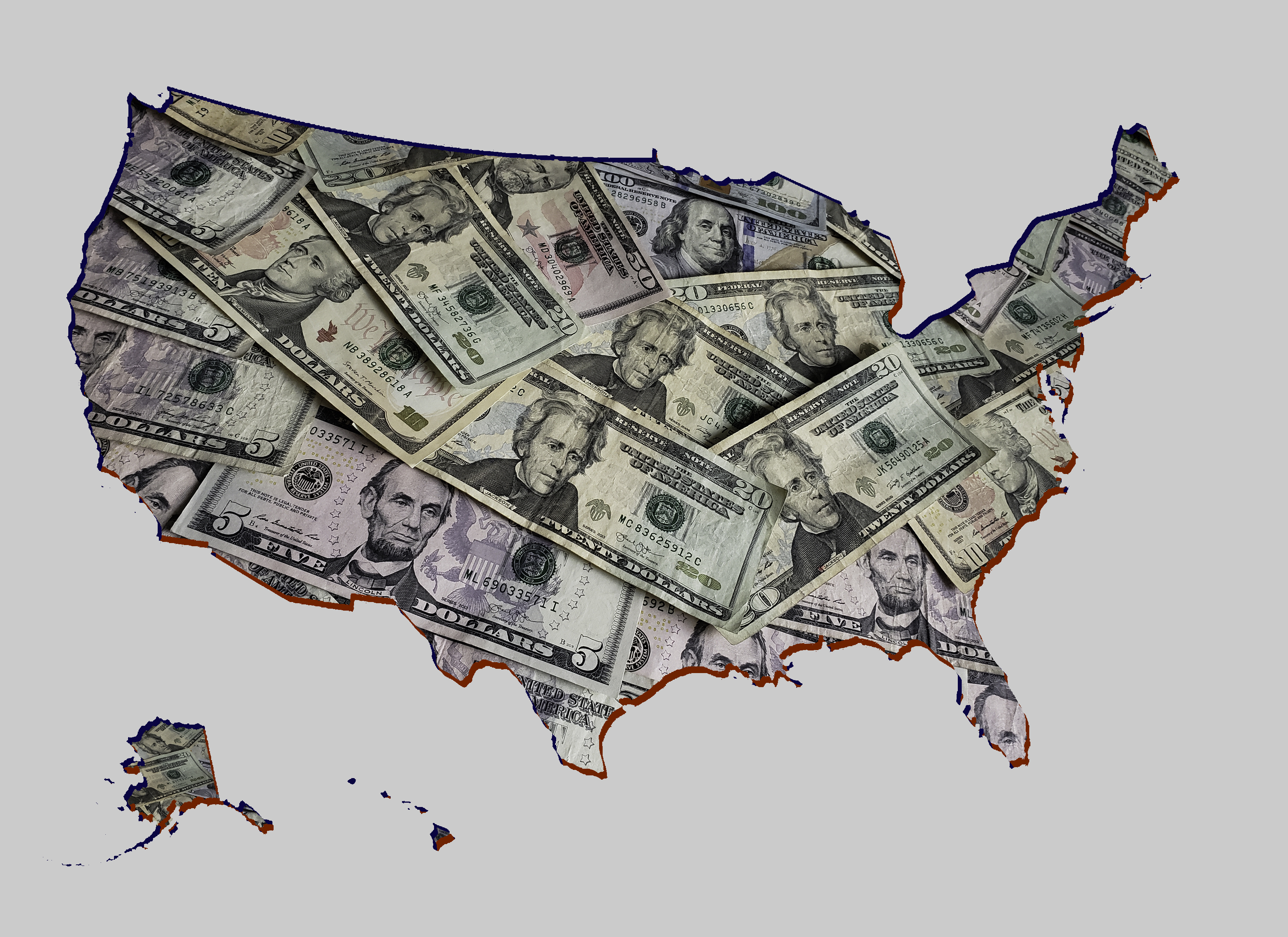Publishers release a crushing number of personal-finance books every year, most of which fall into the Taco Bell category. That is, Taco Bell uses the same few ingredients -- meat, cheese, sauce, lettuce, tomatoes and shells -- to make variations of its basic dishes. The ingredients in your basic personal-finance book boil down to: Pay down your credit cards, pay yourself first, diversify your portfolio and buy low-cost funds. Only the titles change.
Even an interesting investing shtick gets old quick. For example, Jim CramerUs franchise has grown to three cheesy books in three years: Jim Cramer's Mad Money, Jim Cramer's Real Money and this year's Jim Cramer's Stay Mad for Life. Jim, you're a crazy guy -- we get it.
So to make our list of best investing books, an author had to write something that's not just useful but original. If there's a theme this year, it's helping you cut through the noise that prevents you from being a better investor.
From just $107.88 $24.99 for Kiplinger Personal Finance
Become a smarter, better informed investor. Subscribe from just $107.88 $24.99, plus get up to 4 Special Issues

Sign up for Kiplinger’s Free Newsletters
Profit and prosper with the best of expert advice on investing, taxes, retirement, personal finance and more - straight to your e-mail.
Profit and prosper with the best of expert advice - straight to your e-mail.
Don't be cocky -- or greedy or scared or surprised or ...

Your Money & Your Brain: How the New Science of Neuroeconomics Can Help Make You Rich
By Jason Zweig (Simon & Schuster, $26)
The most remarkable breakthrough in personal finance this century is identifying the reasons we are so poorly programmed for investing. Brain scans reveal why in matters of money we often possess the discipline of a dog in a butcher shop and the judgment of a drunken teenager on spring break.
The primitive parts of our brain, fired by pleasure and fear hormones, sometimes override our more evolved and logical lobes. So we prefer a gamble to a sure thing. Gains make us euphoric and willing to make long-shot bets. Losses make us fearful and so cautious we miss opportunities.
Of the recent books about investor psychology and neuroeconomics, journalist Jason Zweig's is the first comprehensive treatment for the lay investor. He has spoken to or had his brain scanned by everyone who counts in the field, and he puts all of it in the book (which goes on a few dozen pages too long).
Also highly recommended is Inside the Investor's Brain (Wiley, $60). This is a more scientific and less anecdotal treatment of the same subject -- but still clear and accessible. The author is Richard Peterson, a psychiatrist and former trader who trains professional investors to overcome their bad habits.
Why the markets are even risker than we suppose

A Demon of Our Own Design: Markets, Hedge Funds, and the Perils of Financial Innovation
By Richard Bookstaber (Wiley, $28)
Hedge funds are private investment accounts that often use exotic financial instruments and strategies to make money and reduce risk for their wealthy clients. They're so exotic, in fact, that the fund managers themselves sometimes can't predict the consequences.
Case in point: The 1987 market crash was triggered by the use of a hedging strategy known as "portfolio insurance." Back then, so many money managers used the same portfolio-insurance strategy that on Monday, October 19, 1987, "they poured sell orders into the S&P futures market pit by the truckload," says author Bookstaber. By the end of the day, the market had suffered a 22.6% drop -- its worst one-day drop in history. Bookstaber is in a unique position to point the finger, having helped create the technique while at Morgan Stanley.
Hedge-fund clients can suffer from such strategies, sure, but they know about the risks. The pity is that hedge funds whipsaw small investors who aren't their clients when they roil entire markets. This book brings the big, shadowy hedge-fund demon into the light, although Bookstaber doesn't have any strong recommendations on how to rein it in. Still, this primer from a savvy insider makes hedge funds the devil you know, which is better than the other kind.
[page break]
Know beans about why a stock rises and falls

Grande Expectations: A Year in the Life of Starbucks' Stock
By Karen Blumenthal (Crown Business, $25)
The concept here is deceptively simple: Financial journalist Blumenthal follows America's high-caf growth stock for a year to document what makes its price change, and how and why managers, traders and investors do what they do. The tone is simple, too, and so sweet you'll wish she'd emptied fewer sugar packets into her post-consumer, recycled-content, hot-beverage cup. In one two-page stretch she calls events "quirky," "strange" and "dastardly," when in fact they are none of the above.
But this is a fine stock primer. It covers everything from why companies buy back stock and split shares to how they handle the financial press and build and maintain a brand. The reporting is detailed, balanced and interesting.
On share buybacks, for example, we learn how companies make the purchases furtively, why they say they're buying their own shares, and what their real motives may be. The classic reason for buying back shares is that a company thinks its stock is undervalued. But with Starbucks "priced somewhere in the stratosphere," other reasons make more sense, writes Blumenthal, including boosting the company's stock price even further.
The tone is breezy, but Blumenthal isn't afraid to ask the tough questions -- or to get tossed from an annual meeting.
Doomsday is upon us! Tune up your portfolio!

Crash Proof: How to Profit from the Coming Economic Collapse
By Peter Schiff with John Downes (Wiley, $28)
Ever since Ravi Batra's The Great Depression of 1990, I've sought out financial-apocalypse books. They're a guilty pleasure because it's fun to laugh at pundits who are so spectacularly wrong. Batra somehow divined that depressions come in cycles, and he wrote in the late 1980s that one was due. Sell your house! Hoard cash! Oh, and miss one of the greatest bull markets in history.
Still, it's our fate to be lulled into a false sense of financial security (see Your Money & Your Brain), so wise investors should routinely challenge their assumptions.
Generally speaking, perma-bears such as financial prognosticator Peter Schiff hold less sway with me than generally optimistic pundits who turn Cassandra. But Schiff earned attention when his book, released early this year, had a dead-on chapter titled "They Burst Bubbles, Don't They? The Coming Real Estate Debacle."
Schiff's case that the U.S. economy is a house of cards seems overblown; but if even half of his predictions come true, the dollar will continue its steep slide. So his advice to invest more in foreign securities is excellent, and his logic about the small downside of such a strategy is hard to fault. As far as creating a "gold portfolio" and some of his other Batra-esque recommendations ... I'll pass. But as a reality check, Crash Proof is right on the money.
The shaky economy behind India's thriving stock market

In Spite of the Gods: The Strange Rise of Modern India
By Edward Luce (Doubleday, $26)
India's finance minister recently had this suggestion for investors thinking about volatile and pricey Indian stocks: "Do your homework." For stock speculators, P. Chidambaram said he had "no advice." Both reflect shades of Alan Greenspan's "irrational exuberance."
Indian stocks have returned an almost-irresistible 40% annualized over the past five years. But before jumping in too deep, do your homework by reading In Spite of the Gods.
The potential for profits in the world's largest democracy is vast, but the country's economic inequality makes it risky. Some 750 million of India's 1.1 billion people live in villages with inadequate health care and no schools, reports author Edward Luce, a Financial Times writer who spent five years in India.
India has powerful advantages as well as big disadvantages, says Luce. On the positive side: diversity, democracy, a young and hungry workforce, and a free media and judiciary. On the negative end: poor infrastructure, pollution, a growing AIDS epidemic, heavy-handed government regulation and corruption.
So India is a shifting mosaic, and Luce won't hazard a guess as to how the pieces will fall into place -- or how they could fall apart. But if you're investing heavily in India, forewarned is forearmed.
Profit and prosper with the best of Kiplinger's advice on investing, taxes, retirement, personal finance and much more. Delivered daily. Enter your email in the box and click Sign Me Up.

-
 State Tax Changes 2026: Is Your State Cutting (or Raising) Taxes This Year?
State Tax Changes 2026: Is Your State Cutting (or Raising) Taxes This Year?Tax Changes As a new year begins, taxpayers across the country are navigating a new round of state tax changes.
-
 Who Said That? Match the US President to the Quotation
Who Said That? Match the US President to the QuotationWho better to give advice on aging, retirement and finances than a U.S. president? Our short quiz will determine whether you're a history buff or buffoon.
-
 When Do W-2s Arrive? 2026 Deadline and 'Big Beautiful Bill' Changes
When Do W-2s Arrive? 2026 Deadline and 'Big Beautiful Bill' ChangesTax Deadlines Mark your calendar: Feb 2 is the big W-2 release date. Here’s the delivery scoop and what the Trump tax changes might mean for your taxes.
-
 Best Banks for High-Net-Worth Clients
Best Banks for High-Net-Worth Clientswealth management These banks welcome customers who keep high balances in deposit and investment accounts, showering them with fee breaks and access to financial-planning services.
-
 Stock Market Holidays in 2026: NYSE, NASDAQ and Wall Street Holidays
Stock Market Holidays in 2026: NYSE, NASDAQ and Wall Street HolidaysMarkets When are the stock market holidays? Here, we look at which days the NYSE, Nasdaq and bond markets are off in 2026.
-
 Stock Market Trading Hours: What Time Is the Stock Market Open Today?
Stock Market Trading Hours: What Time Is the Stock Market Open Today?Markets When does the market open? While the stock market has regular hours, trading doesn't necessarily stop when the major exchanges close.
-
 Bogleheads Stay the Course
Bogleheads Stay the CourseBears and market volatility don’t scare these die-hard Vanguard investors.
-
 The Current I-Bond Rate Is Mildly Attractive. Here's Why.
The Current I-Bond Rate Is Mildly Attractive. Here's Why.Investing for Income The current I-bond rate is active until April 2026 and presents an attractive value, if not as attractive as in the recent past.
-
 What Are I-Bonds? Inflation Made Them Popular. What Now?
What Are I-Bonds? Inflation Made Them Popular. What Now?savings bonds Inflation has made Series I savings bonds, known as I-bonds, enormously popular with risk-averse investors. How do they work?
-
 This New Sustainable ETF’s Pitch? Give Back Profits.
This New Sustainable ETF’s Pitch? Give Back Profits.investing Newday’s ETF partners with UNICEF and other groups.
-
 As the Market Falls, New Retirees Need a Plan
As the Market Falls, New Retirees Need a Planretirement If you’re in the early stages of your retirement, you’re likely in a rough spot watching your portfolio shrink. We have some strategies to make the best of things.
